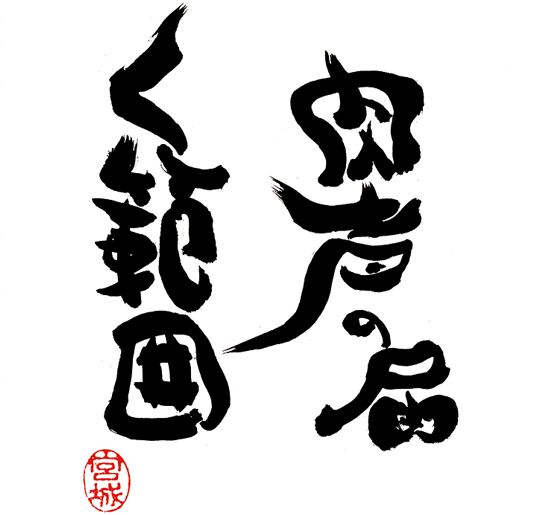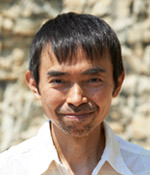Message

How far can our voice reach?
The artists involved in World Theatre Festival Shizuoka 2018 don’t operate in a vacuum of their own making, but take great pains to present their works for their audiences’ benefit.
MIYAGI Satoshi
In their use of SNS, people are similarly mindful of their audiences — but by passively striving to not behave “incorrectly” in the digital realm. That’s not to say they are overly concerned about the veracity of what they post, but instead they’re mindful of what kinds of statements may cause annoyance and create problems in the online community.
Of course even outside of Twitter or Facebook, people need to be concerned that their behavior in public doesn’t disturb others — not least because they may find themselves cited on SNS for harassment or being a bad person of some sort.
In Japanese, such a person who tends to behave “incorrectly” is often termed a “kuki wo yomenai hito” (person who can’t sense the surrounding mood).
In English, “correctness” generally refers to certain ideas of appropriate behavior — but in societies everywhere, people judge each other by such standards.
In times gone by, these were watched over by people in authority, such as magistrates, who ensured people didn’t cause trouble. Nowadays, however, social standards tend to be upheld by untold thousands whose faceless online anonymity renders an uncanny dimension to the process.
Yet this very weird mentality of mutual surveillance is further deepened by people’s reluctance to detach themselves from it for fear of isolation if they turn their back on the virtual world.
In contrast to this, I think “physical sense” may often exist in opposition to “correctness.” For example, some of an individual’s likes and dislikes may stem from an unpleasant smell or taste from long ago, or their dislike of certain types of people they’ve encountered. Such senses then become their instincts.
Consequently we often see cases of people who’ve made statements based their instincts becoming easy targets of mass attacks online. Such merciless attacks then make those people and others frightened, so they hesitate to diverge from the majority and instead just make “safe” comments.
However, if people continue to only make “safe” comments, and ensure they always behave “correctly,” this will surely lead to a gradual build-up of their stress and dissatisfaction as they feel unable to express their honest feelings.
In contrast, some people apparently don’t need to worry about gaining tacit consent by upholding an unspoken correctness. Such people — whose individual character and/or wit allows others to accept their voice and opinions even though they differ from the majority — are able to speak freely even in this networked world of mutual surveillance.
When I see a special case like this, I realise just how important it is to make a good job of your own self-promotion in order to survive in today’s world. Moreover, I believe a person’s ability in this respect relates directly to their power to influence society.
Nowadays, anyone who can dispatch information effectively, which often means using IT tools well, can usually spread their views to better effect than someone who is passive. Unlike in the digital world, though, the basic sense of communicating through hearing has undergone no such changes in other societies we inhabit, such as schools, offices and homes. As a result, once people get used to the digital world’s one-way system in which people merely dispatch information and largely disregard receivers’ responses, when they meet others face to face they may tend to just state their opinions without listening or engaging in discussions.
If this continues, what is to become of our society if passive masses are dominated by successful self-promoters and become more and more stressed as their presence fails to register effectively in the unending online stream.
In fact I think I can hear silent voices pleading: “It’s enough. I wish I lived in a free society where I could express my opinions, my likes or dislikes, without any hesitation.”
Then what if the frustrated voices of those silent ones rose up in some kind of xenophobic nationalism?
But worry not: For seven days in spring, World Theatre Festival Shizuoka 2018 brings together artists who put their all into reaching out to audiences with their voices and performances. They are not simply promoting themselves, but making extra efforts through their works to ensure audiences are ready to hear their voices.
MIYAGI Satoshi (General Artistic Director of SPAC)

MIYAGI Satoshi
Born in Tokyo in 1959, MIIYAGI is the General Artistic Director of Shizuoka Performing Arts Center (SPAC). After studying aesthetics at Tokyo University under ODASHIMA Yushi, WATANABE Moriaki and HIDAKA Hachiro, he founded the KU NA’ UKA theater company in 1990 and soon began staging plays overseas as well as in Japan. As a result, MIYAGI’s work — in which he often fuses contemporary textual interpretations with physical techniques and patterns of Asian theatre — has long been acclaimed both at home and far beyond. Indeed, in 2004 he received the 3rd Asahi Performing Arts Award, and the next year the 2nd Asahi Beer Art Award.
Since taking up his position with SPAC in April 2007, MIYAGI has staged many of his own works — including Medea, the Hindu epic Mahabharata, and Peer Gynt — and has invited artists from abroad to present pieces casting a keen eye on the modern world as they see it. In line with his aim to make theatre “a window to the world,” he has also started a new SPAC-based project aimed at the youth of Shizuoka.
In July 2014, MIYAGI was invited to the Festival d’Avignon in southern France, where he received excellent reviews for his open-air version of the Hindu epic Mahabharata staged in a huge stone quarry named La Carrière de Bourbon.
Following that landmark achievement, the festival extended the honor of inviting MIYAGI to present a Buddhist interpretation he created of the ancient Greek mythological tragedy Antigone as its super-prestigious opening program for 2017. On that occasion, which was the first time an Asian play had ever been selected to launch the festival, MIYAGI’s exalted “stage” was the open-air Cour d’honneur du Palais des papes (the Honor Court of the Palace of Popes). By the play’s end, those towering medieval stone walls were ringing out with long and splendid standing ovations welcoming the work’s director and creator along with SPAC’s actors and staff — while more than 60 European media all gave great reviews.
World Theatre Festival Shizuoka 2018
Shizuoka Performing Arts Center (SPAC) will hold its annual World Theatre Festival Shizuoka 2018 from April 28 to May 6, coinciding as usual with the national Golden Week holiday. In line with its slogan of “Fujinokuni (The Mt. Fuji region) and the world are connected through the performing arts,” SPAC will introduce a wide range of cutting-edge theatre programs from Japan and abroad at venues in Shizuoka City and the surrounding, wonderfully scenic area. Following on last year’s success, SPAC will also host its Open-air Performing Arts Festival under Mt. Fuji 2018 in the city’s central Sumpujo Park during the same period.
In addition, this festival also features STRANGE SEED, comprising a wide range of fringe arts events being held around the city in cooperation with Shizuoka City’s major Town Becomes Theatre Project.
Meanwhile, in the popular nedoco Project for Everyone, guest accommodation facilities run by volunteers will again be open during the festival period. In a nutshell, SPAC aims to present a joyous and inspiring World Theatre Festival Shizuoka festival that remains deeply rooted in its home region of Shizuoka while also connecting to the wider world through theatre.
What is SPAC? Shizuoka Performing Arts Center
SPAC was founded in 1995 by the Shizuoka prefectural government and commenced its full-fledged activities in 1997 under the direction of SUZUKI Tadashi, its first General Artistic Director. As a pioneer of publicly funded performing-arts organizations in Japan, SPAC retains its own staff of actors, technical and production staff, who are based at its own venues and facilities. The mission of SPAC is not only to create original pieces, but also to invite progressive artistic companies and creators to Shizuoka and to develop human resources seeking expression through the performing arts. Since April 2007, when he was appointed as the General Artistic Director, MIYAGI Satoshi has led SPAC in a buoyant new phase of development and expansion.
